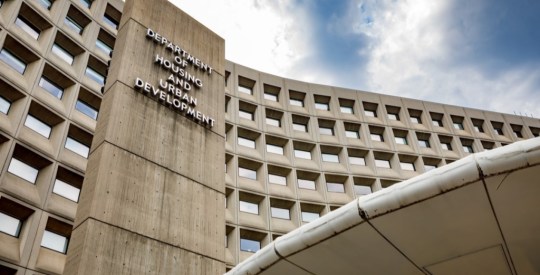While Fannie Mae and Freddie Mac continue to realize credit losses from mortgages originated in the several years prior to Federal Housing Finance Agency conservatorship, the housing recovery resulted in improved financial results.
Additionally, Fannie Mae and Freddie Mac continue to provide support to the housing market, providing capital market funding for 77% of all mortgages originated in 2012, or $1.3 trillion.
But the market shouldn’t get their spirits up just yet, the enterprises are still carrying risk.
“Given that the government-sponsored enterprises have depleted all of their shareholders’ equity, are operating with financial support from the Treasury and are not able to retain their earnings, when considering safety and soundness, it is important to consider the risks associated with the enterprises’ operations since being placed in conservatorship,” FHFA’s fifth annual report to Congress explained.
The conservatorships of the GSEs, combined with Department of Treasury financial support stabilized both enterprises, but didn’t restore them to a steady financial foundation.
Fannie Mae and Freddie Mac remain exposed to credit, counterparty and operational risks.
Talks around the watering hole on Capitol Hill are shifting from the GSEs remaining in conservatorship permanently and expanding private sector participation.
The FHFA mirrors this important issue in their report, stating that a private sector comeback is essential for the long-term health of the mortgage market.
Nonetheless, directing the GSEs’ operations in conservatorship is still present and carries a set of challenges for the FHFA.
“In particular, it is critical that the enterprises have appropriate human resources to maintain operations and minimize losses in the face of uncertainty regarding the long-term prospects of the enterprises’ operations and charters,” FHFA stated.
For 2012, FHFA assigned Fannie Mae a composite rating of critical concerns, which remains unchanged from 2011.
The GSE exhibits critical financial weaknesses as evidenced by its lack of capital, the quality of legacy assets, level and extent of internal control breakdowns, uncertainty over the sustainability of its recent financial performance and the nature of conservatorship status, the examination noted.
On a similar note, the housing agency assigned Freddie Mac a composite rating of critical concerns in 2012, unchanged from 2011.
The enterprises exhibit critical financial weaknesses as evidenced by its $187.5 billion draw from Treasury and uncertain future prospects. Since then, the GSE paid the Treasury $55.1 billion in cash dividends. However, the FHFA noted that under the Senior Preferred Stock Purchase Agreements, the payment of dividends does not offset or pay down prior Treasury draws.
Fannie Mae CEO Tim Mayopoulos said last month that, as a result of this policy, profits are not helping to re-capitalize the GSE.
Furthermore, the overall risk profile of Freddie Mac remains evaluated for a number of factors including, continuing credit losses from the pre-2009 single-family mortgage portfolio and concerns over counterparty credit risk, FHFA pointed out.
Since Fannie Mae and Freddie Mac were placed into conservatorship, major strides toward rehabilitating the mortgage market have been made, but there is still much to be done, the report warned.
“The nation will need a healthy and efficient secondary mortgage market regardless of the final resolution of the conservatorships. That is why we continue to move forward with the framework we began in 2012—one that will work for the Enterprises now and in the future,” the FHFA concluded.





